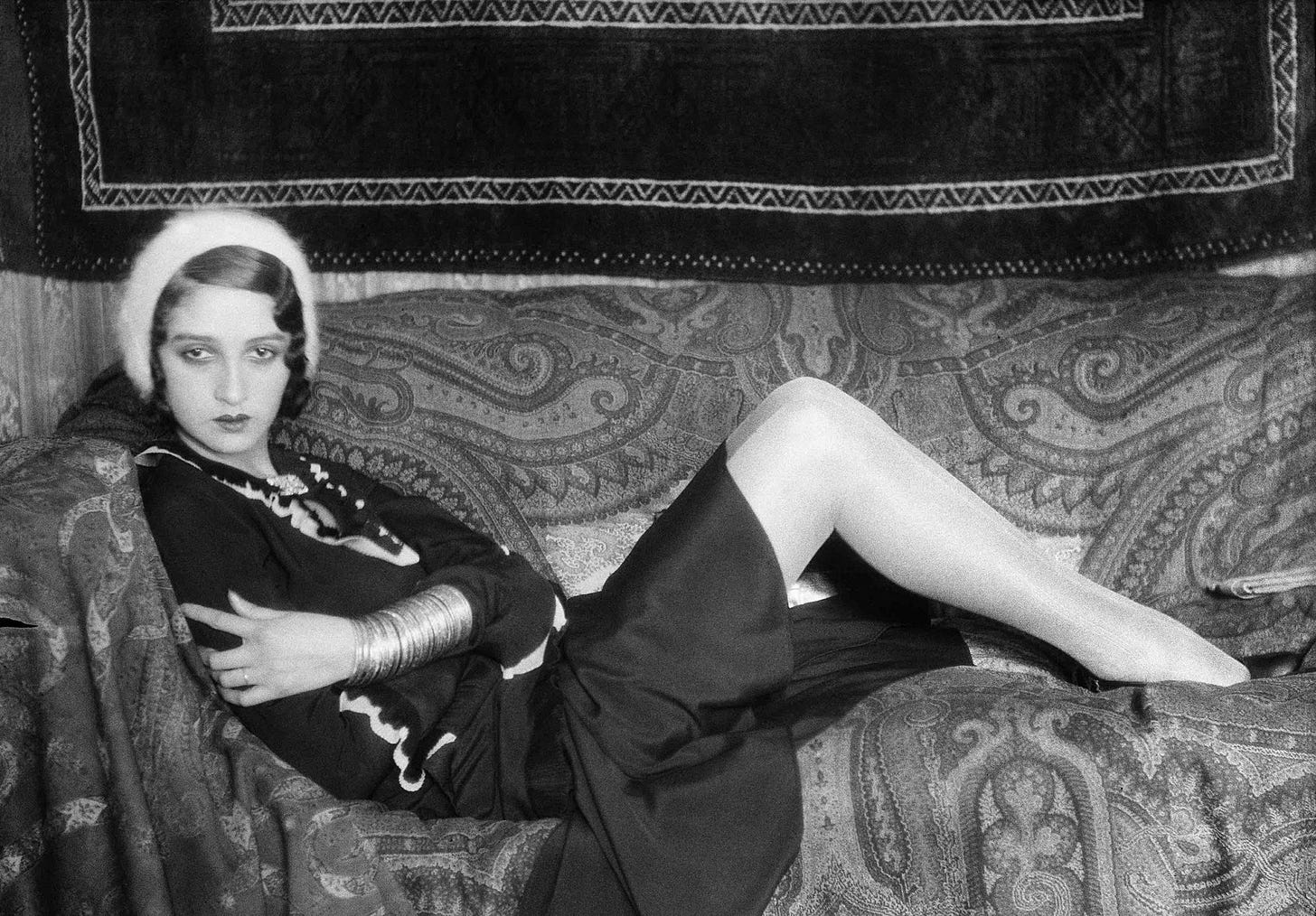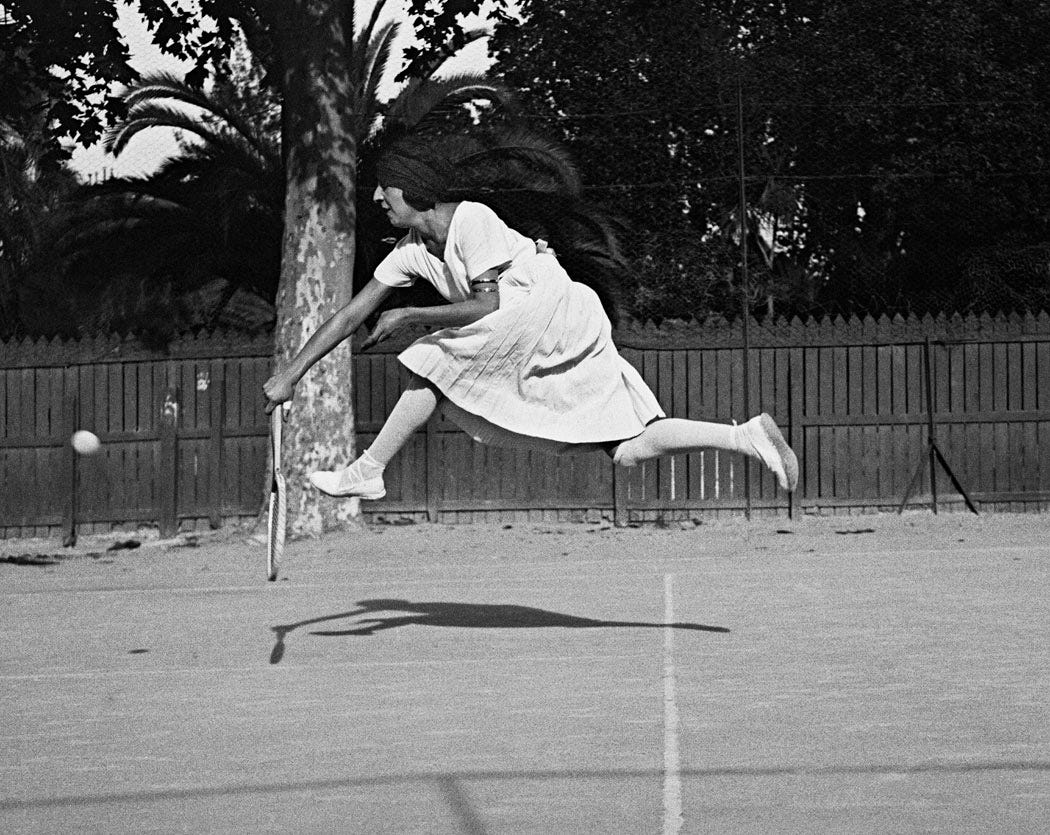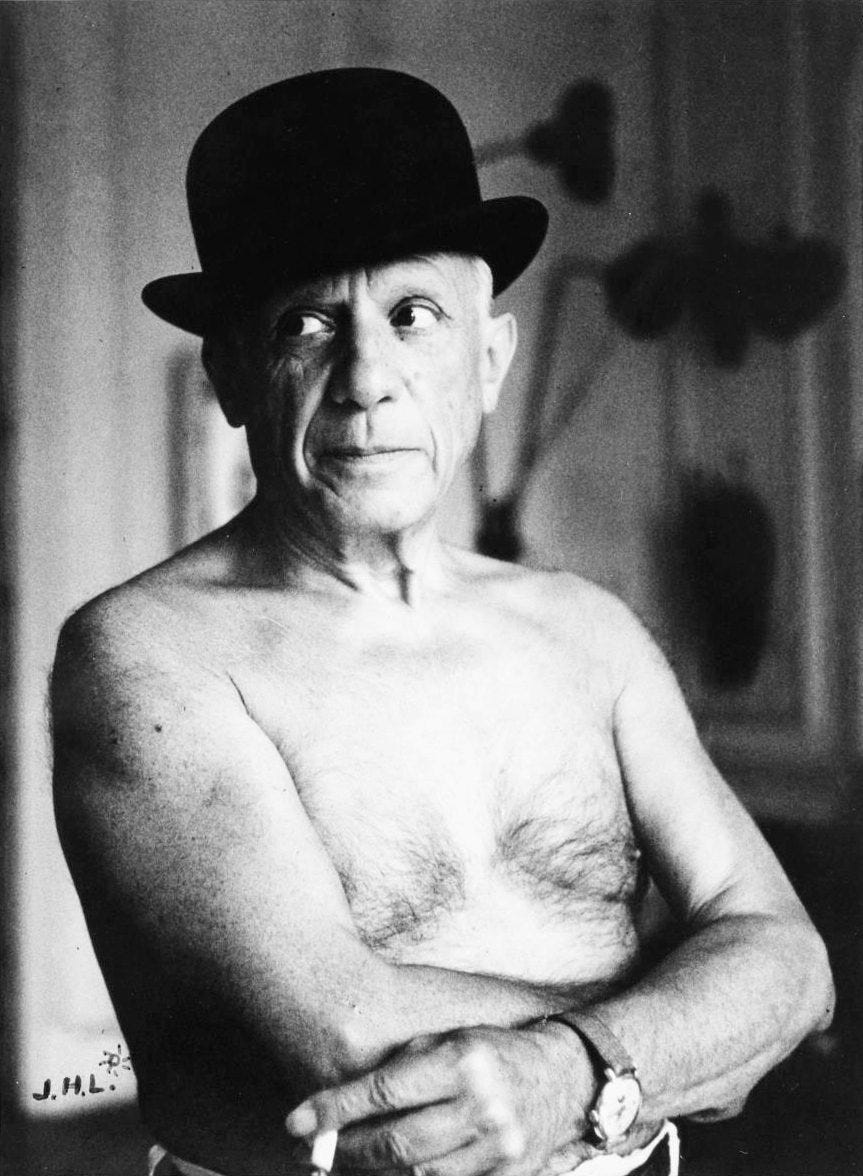This week, one of the city’s big art events, Paris Photo, opens in the newly renovated Grand-Palais. The first four days are devoted to discussions of photography, an art with which France has always had an intimate connection.
Our apartment isn’t short of photographs; in fact, they figure prominently in the decor. Each morning, the first image I see in my office is the one above. The model is Renée Perle. She was photographed in 1931 by Jacques-Henri Lartigue.
In 1962, a placid white-haired Frenchman of 69 wandered into the Manhattan offices of photographic agent Charles Rado. With him was a much younger woman, dark-haired and dramatic. Between them, they carried a bulky photographic album.
The man was Jacques-Henri Lartigue; the woman his third wife, Florette. She explained that her husband, a lifelong amateur photographer, wished to offer some of his early images for sale. Without expecting much, Rado opened the album - and gaped as turn-of-the-century Paris leaped out at him. He’d expected photographs of the 1920s and 1930s. Instead, he saw ladies in plumed hats strolling with their tiny Pekinese and Jack Russells. All were dressed in the height of a fashion that disappeared before World War I.
Rado turned the album pages in increasing disbelief. Here were aircraft as fragile as kites wheeling in empty skies, primitive racing cars cornering on unpaved country roads; a girl in Edwardian dress frozen in the instant of leaping down a flight of stairs - and each image preserving that crucial sliver of time another French photographer, Henri Cartier-Bresson, defined as “the decisive moment.”
Champion Suzanne Lenglen, photographed by Lartigue.
Next to each image, a neatly written annotation gave its date and location, as well as personal notes – on the circumstances of the picture or Lartigue’s state of mind when he took it: a diary is both words and pictures.
“But why have I never seen these before?” asked Rado. “Where were they published?”
“Oh, they were never published,” said Lartigue. “I made these for my own pleasure.”
Bit by bit, his story emerged. He was born in 1894 into a life of wealth and privilege. His father, France’s eighth richest man - and a keen photographer - gave him his first camera when he was eight, and taught him how to use it. Like most amateur photographers, Jacques-Henri snapped what was closest to him. But since what he saw each day was leisure and privilege, those became his subjects.
He headed for the Bois de Boulogne, the wooded park on the edge of Paris where the rich and fashionable strolled or rode each afternoon. Nobody questioned his right to photograph them. In his expensive clothes and carrying a state-of-the-art camera, the little boy was obviously One Of Them.
“How many more albums like this are there?” asked Rado.
“Oh, a hundred, at least. And thousands of other images. Glass plates too. I’ve never counted.”
Rado turned another page, and blinked at the image of the scowling older man, bare-chested but wearing a bowler hat.
“Is that Pablo Picasso?”
“Of course.”
“When did you stop taking photographs?”
“Oh, I never did. The Picasso pictures are quite recent.” Lartigue pointed to his notation. “You see, 1955. Antibes.”
In the catalog for the exhibition staged at the Museum the following year, Szarkowski proposed Lartigue as “the precursor of all that is lively and interesting in the middle of the 20th century.” But Jacques-Henri disagreed. “I am not part of history,” he said. “Basically I am extremely self-centered and selfish. I only take notice of what interests me or amuses me.”
Prominent among the images were photographs of a slim dark-eyed girl. She stared out boldly, seated behind the wheel of an Hispano-Suiza or slouching in beach pajamas that could only have been designed by Schiaparelli or Poiret. Long-faced, dark and solemn, she might have stepped from a canvas by Modigliani.
“My friend Renée Perle,” explained Lartigue.
He met the statuesque fashion model in 1930. His diary recorded his excitement as he waited for their first rendezvous.
Paris, March 7, 1930 - Five thirty-five. There she is! Can it really be her? Ravishing, tall, slim, with a small mouth and full lips, and dark porcelain eyes. She casts aside her fur coat in a gust of warm perfume. We’re going to dance. Mexican? Cuban? Her very small head sits on a very long neck. She is tall; her mouth is at the level of my chin. When we dance, my mouth is not far from her mouth. Her hair brushes against both. Delicious.
During their two years together, he photographed her hundreds of times, most often on the Riviera. Her willowy body suited the languid, almost tropical vegetation of the south while her dark complexion glowed against the white walls of Mediterranean architecture.
Between the revelation of the 1963 MoMA show and his death in 1986, Lartigue was never out of the limelight. But while he basked in his fame as he had in the sunlight of the Côte d’Azur, he remained an enigma. Critics refused to believe that such images - “probing, observant, sophisticated, and mocking” - could have been produced by someone interested only in having a good time. Lartigue just smiled his little cat smile and shook his head. “There is a spectator in me who watches”, he said, “with no concern for specific events, without knowing if what is happening is serious, sad, important, funny or not. Happily, I am an amateur, I do nothing but what amuses me.”
So what advice would he give to an aspiring photographer? The old man shrugged. Surely the answer was obvious.
“To fall in love.”







Beautifully told story of the great - little - man himself. He had a superb eye and even with the limitations set by the time and camera technology available to him, he managed to capture extraordinary moments. I have always loved that he signs his work J. H. Lartigue with a small sun with rays emanating from it, in blue fountain pen. His whole attitude to life, love and boundless curiosity is so inspiring. Sure, it helps never to have to think about money, much like Cartier-Bresson, but Lartigue is in a category all his own.
My hero!
https://substack.com/home/post/p-144333283